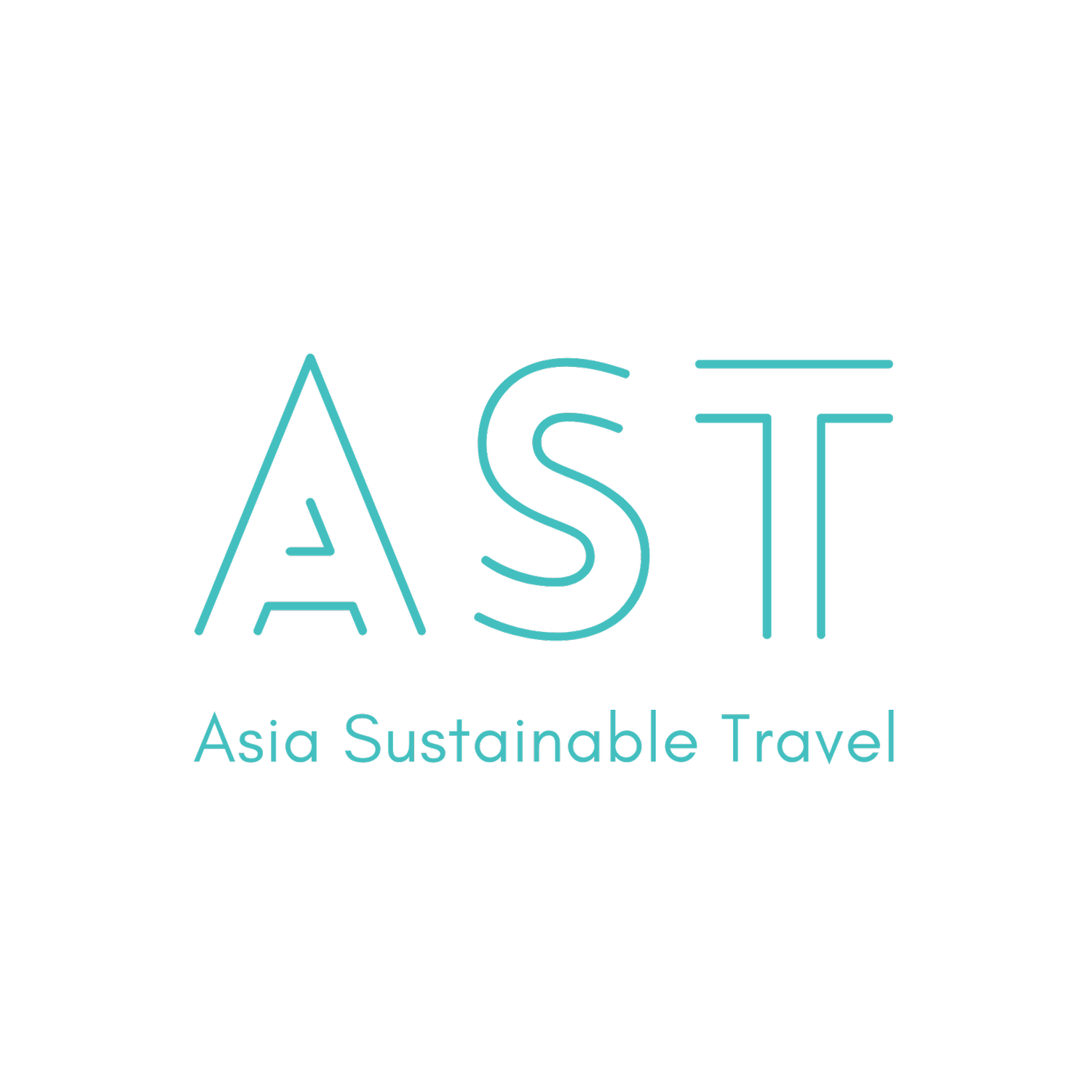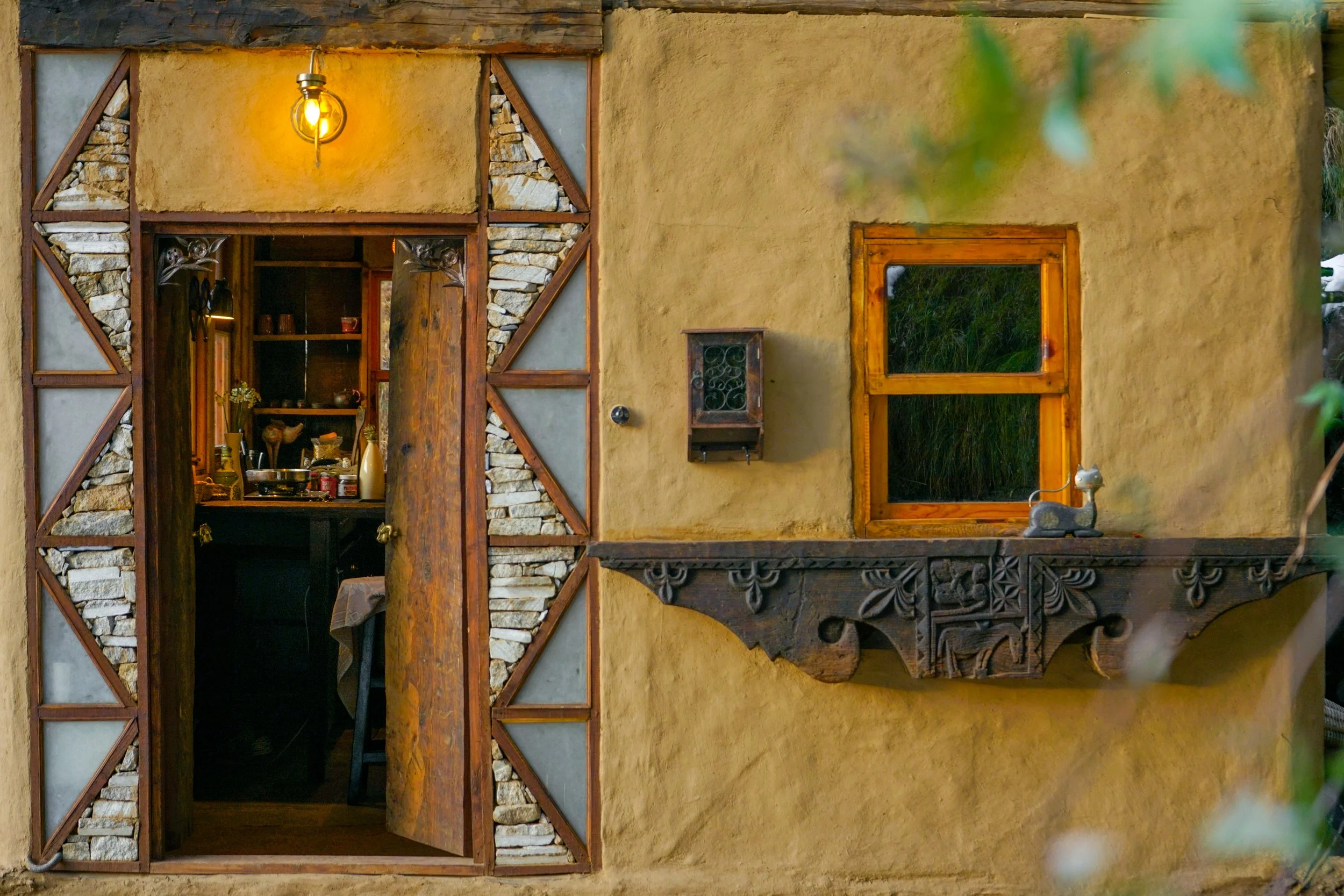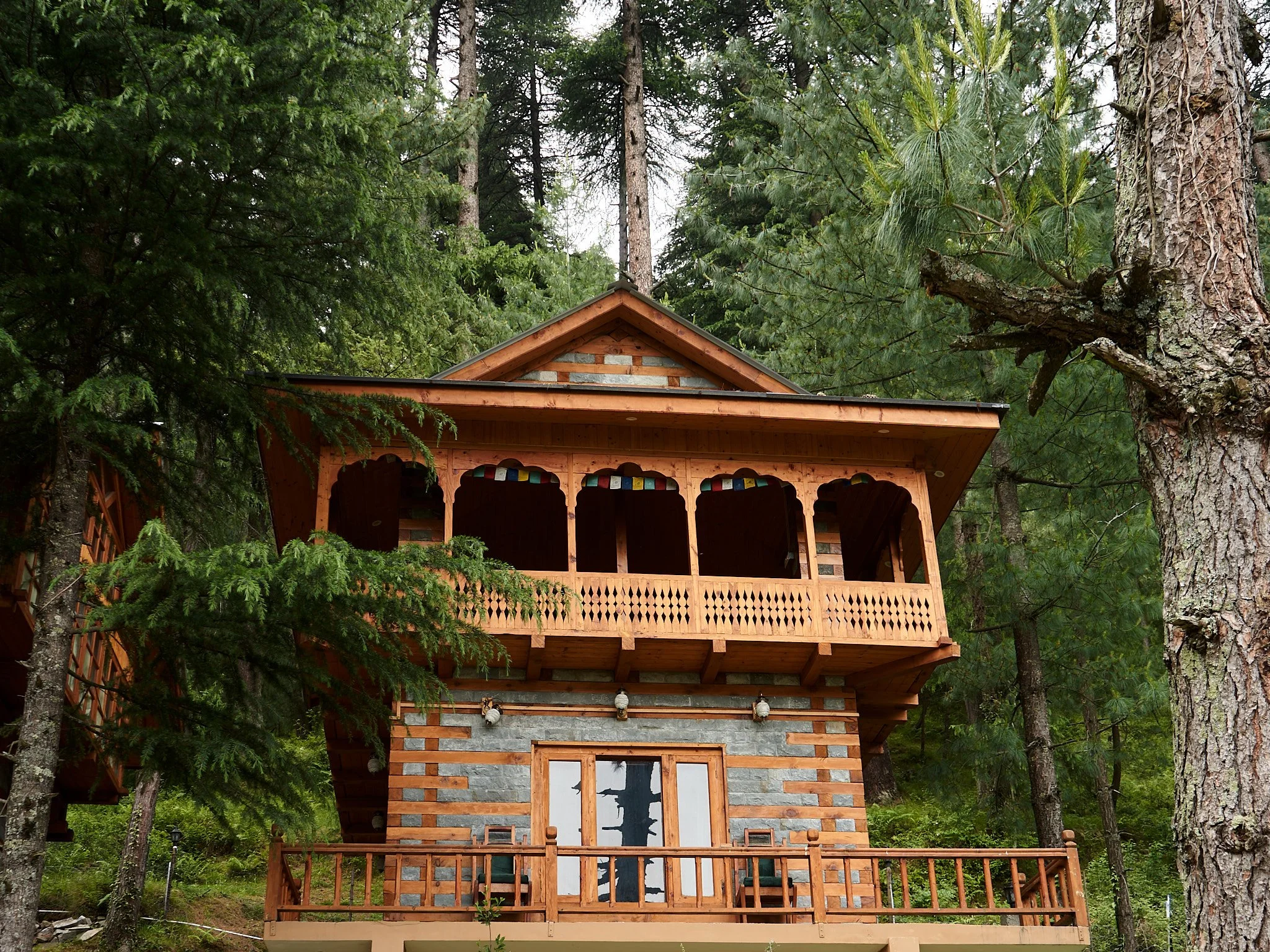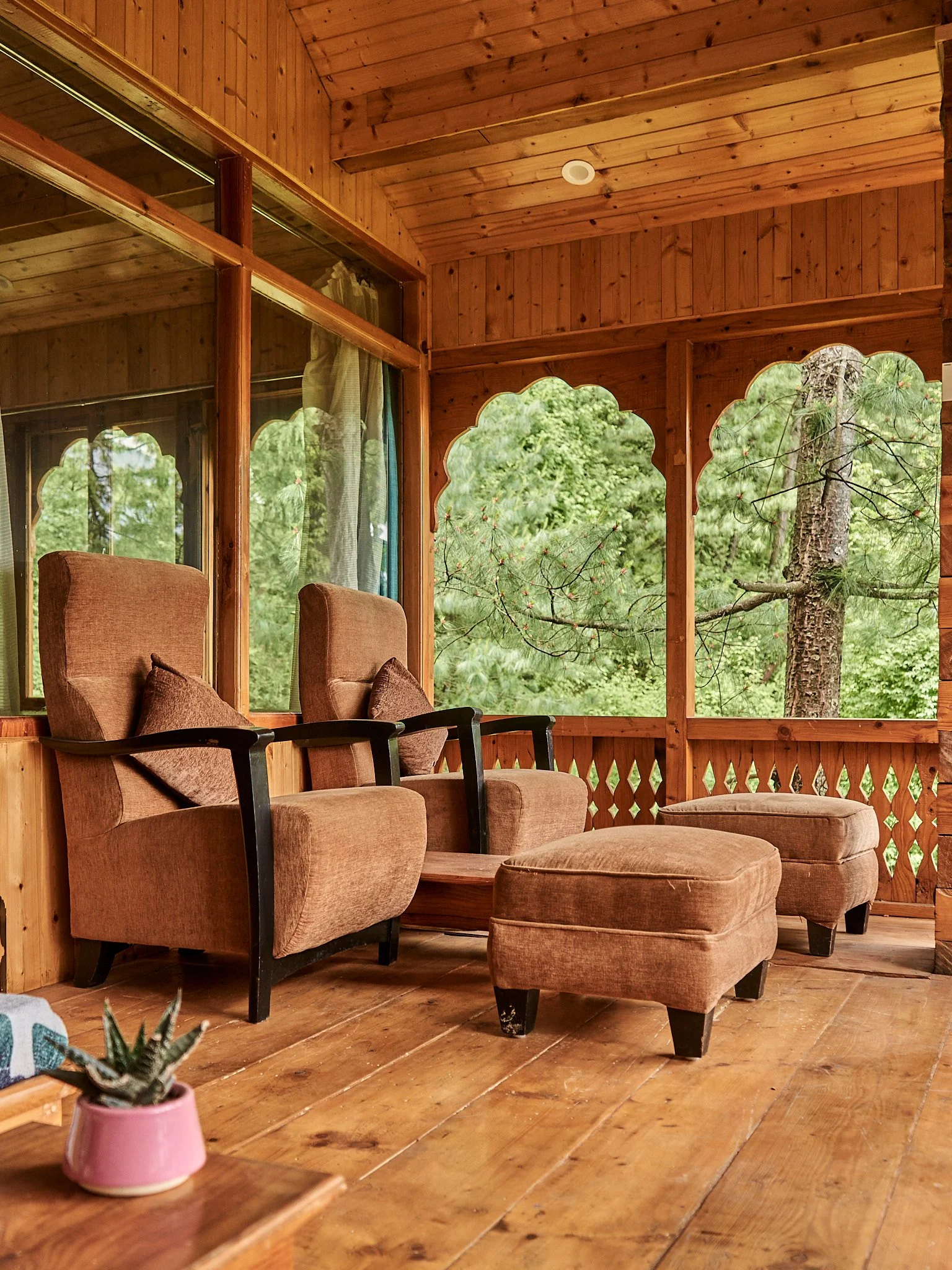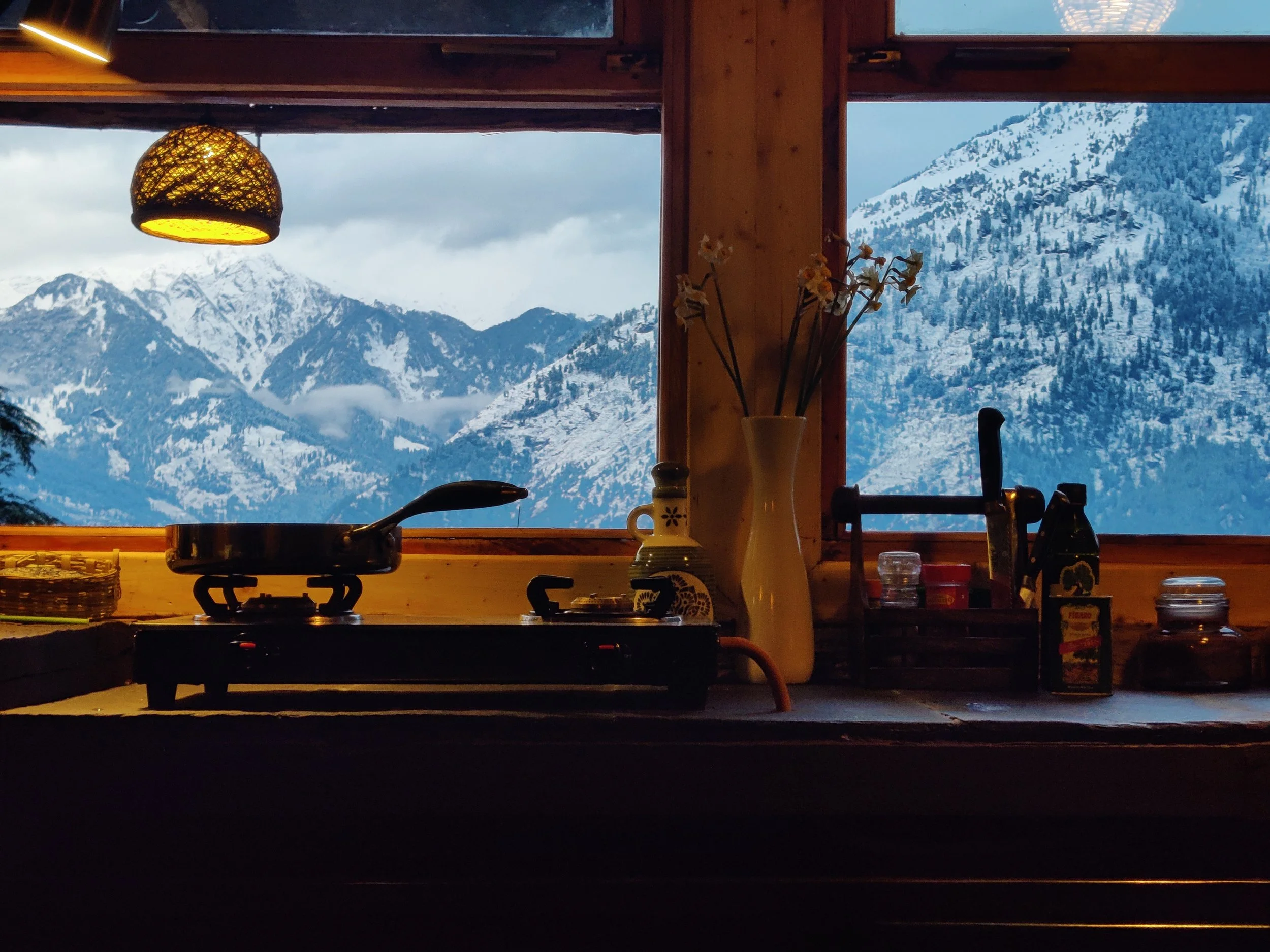Slow and Steady Wins The Climate Race in Travel
NORTH, Naggar, Himachal Pradesh, India.
Have you heard of Dhajji houses? Derived from a Persian word meaning patchwork quilt wall, Dhajji Dewari is a traditional building method in the western Himalayas.
During the 7.6-magnitude earthquake of October 2005 in Kashmir, these traditional Dhajji houses proved earthquake-resistant, while nearly half a million other buildings made with modern building materials collapsed. After the earthquake, over 100,000 homes were reconstructed using the indigenous construction method of Dhajji Dewari.
When you visit NORTH, a creative studio and a collective in Naggar, Himachal Pradesh, India, you get to live in its Dhajji cabin, an experience one can never imagine having while living in the city.
Rahul Bhushan, an architect, director and founder at NORTH, says, “The vision of NORTH is to flourish the culture and the ancient wisdom of Himachali culture and share that way of living with the world. The dream is to create a creative campus, a self-sustained, community-driven place where life is easy, fun, and connected with nature. We built our Dhajji Cabin after years of the non-existence of such houses. It is made from reclaimed wood taken from a 200-year-old house. Living here is an experience in itself.”
The space is designed in a way that it demands a traveler and not a tourist, which means that to immerse oneself in such stories in the best possible way, one must travel slowly and mindfully, immersing themselves in culture and stories at every step. But Dhajji Dewari isn’t the only indigenous form of architecture one can experience in the villages of Himachal.
Rahul Bhushan, an architect, Director and Founder at NORTH
Located 5 km from Naggar, nestled in one of the largest Deodar forests in Himachal Pradesh, is another anomaly to the fast-paced world called The Lazy And Slow.
Ayush Sureka, Founder of The Lazy and Slow, says, “In today’s world, where quick getaways are often the norm, slow travel offers a refreshing alternative for deeper connection and more meaningful experiences. Our name reflects our commitment to providing an environment where guests can unwind, reflect, and truly immerse themselves in nature.”
At The Lazy and Slow, guests can experience the wonder of the beautiful and sustainable Kathkuni-style architecture.
“Using natural materials from the surrounding area minimizes environmental impact and enhances the connection with nature. This eco-friendly traditional architecture resonates with guests who appreciate the blend of comfort and sustainability. Our glass café and secluded apartheid shed offer guests a unique opportunity to spend time in the heart of the forest, promoting a slower pace of life.”
The Lazy and Slow, Himachal Pradesh, India
These mindfully designed havens like NORTH and The Lazy and Slow call for travelers to take their time to appreciate the cultural and historical richness of these beautiful places beyond just ‘quick vacation spots.’
But why are more hospitality and travel businesses creating these experiences that encourage slow travel?
Shoba Rudra, Partner and Founder of Rare India, which promotes hotels and experiences that are community-inclusive and planet-sensitive, says, “Mindful and slow travel is the antidote to mass tourism, and its impacts are long-term, preserving the destination both for the residents as well as the travelers who seek to explore it.”
Quick getaways often lead to a superficial experience and can contribute to environmental degradation. Slow travel, on the other hand, allows guests to engage fully with their surroundings, understand the local culture, and reflect on their own lives.
“By encouraging this slower pace, we hope to inspire our guests to adopt a more sustainable and mindful approach to travel and life,” Ayush believes.
Rahul adds,“The vision of NORTH is to flourish the culture and ancient wisdom of Himachali culture and share the efficient way of living slowly with the world.”
How is slow travel mutually beneficial for travelers, businesses, and communities?
Shoba believes it's an excellent opportunity for travel agents to build high-quality itineraries that weave in more engagement. At the same time, for hotels, it means more room nights and the possibility to showcase the region in all its glory.
“Slow travel has to be intentionally slow and exploratory, rather than a been-there-done-that tick-in-the-box kind of an experience. While the ideal would be to have a traveler inclined to this kind of travel, the onus is also on the travel designer and the hotel to curate experiences that truly immerse travelers. I have coaxed people to spend more nights in a place by including hikes, cooking lessons, art and craft engagements, dining, nature walks, etc., in their itineraries. For local communities, a good tourism and hospitality product translates as jobs, skills training in travel and hospitality, and revenues from local crafts and services sales. Some of the best examples are Kipling Camp, The Sarai at Toria, Ramathra Fort, Lchang Nang, Dera Amer, Kila Dalijoda, and Belgadia Palace,” she says.
Ayush agrees, “For businesses, it fosters deeper connections with guests, leading to enhanced customer loyalty and repeat visits. Businesses can differentiate themselves and build a strong brand identity by focusing on a niche market that values meaningful and sustainable travel.”
It’s not just businesses; local communities also benefit from slow travel.
“At The Lazy and Slow, we have several initiatives that directly support and involve the local community. For instance, we arrange orchard visits where guests can learn about sustainable farming from local orchardists. This provides additional income for the farmers and educates travelers about sustainable practices and the importance of local agriculture. We also offer slow-guided hikes and treks, employing local guides who bring a wealth of knowledge about the area. By promoting slow travel, we help distribute economic benefits more evenly across the region, support cultural preservation, and encourage environmental sustainability. These practices create a symbiotic relationship that enhances the traveler’s experience and the local community's well-being.”
Rahul truly believes in the power of slow travel to benefit businesses, travelers, communities, and the planet.
“Mountains teach you so many lessons. Traveling to a new culture and place should mean an opportunity to live like locals and gather new knowledge and experiences. We organize seasonal activities, like collecting fallen wood from forests in winter and trekking for herbs in summer. Travelers can learn about crafts, architecture, people, and local life. We even have a nice circular system for food. We take milk from this local lady who gives us cow dung in return. It’s a community-driven system made of small barters that coexist. We aren’t isolated but linked with each other. We encourage travellers to just live here and be part of the ecosystem.”
Photos by: NORTH, Naggar, Himachal Pradesh, India.
But what are the challenges in making slow travel mainstream?
Time and money constraints and group consensus.
Shoba explains, “A true long-stay slow traveler designs their holiday around spending more time at one destination. Logistical constraints arise when people plan with limited days and wish to cover a full region. In group travel, finding places and activities that everyone agrees upon can compromise stays. Lastly, one of the biggest challenges is the knowledge and curiosity of travelers and what they perceive as enjoyable or that which needs validation on social media.”
Specific destinations need more infrastructure and resources.
Ayush agrees that promoting slow travel, while rewarding, comes with its own set of challenges.
He say, “Many travelers are accustomed to fast-paced vacations. Encouraging them to slow down and appreciate a more leisurely pace requires a significant shift in mindset. Also, competing with traditional tourism destinations and packages, which dominate the market with heavy advertising and convenient deals, can be difficult.”
Ayush goes on highlighting, “Ensuring genuinely sustainable operations requires continuous monitoring and education. Some slow-travel destinations may also need more infrastructure to support longer stays, such as reliable transportation and amenities, which can deter potential travelers. Slow travel often attracts travelers with flexible schedules, like retirees or long-term tourists, leading to seasonal peaks and troughs. Balancing business during off-peak times is a challenge. Moreover, promoting slow travel often involves higher initial costs for creating sustainable and high-quality experiences.”
So, what specific strategies can businesses implement to support slow travel?
Use creative marketing and authentic storytelling.
Demonstrating the unique value of slow travel compared to traditional travel requires creative marketing and storytelling. One of the aspects of slow tourism, which is valuable albeit difficult to build into a marketing asset, is how it impacts the image of the destination over a period of time
Shoba says, “One of our strategies is to tell the full story of the destination – everything that the place offers including people stories and what travellers can take with them. What we have also pursued is off-beat destinations where the prospect of explorations are high – both culturally, socially and geographically. The prospect of personal transformation is intrinsic to mindful and slow tourism and contributes to the destination, environment and the community.”
Highlight slow travel as an accessible and genuine form of seeing the world
At The Lazy and Slow, Ayush’s team embraces a range of practices, like community engagement, eco-friendly infrastructure, targeted marketing instead of aggressive marketing, flexible travel packages, and personalized service.
He says, “By offering customizable itineraries and special discounts for extended stays, we make slow travel both appealing and accessible, and by offering a range of unique experiences that encourage longer stays, we have successfully managed to create a travel experience that is both enriching for our guests and beneficial for the local community.”
Rahul adds, “In vulnerable terrains like Himachal, rapid infrastructure growth and mass tourism are major contributors to rapid erosion. But this can be a big opportunity for mountain people. We need to recognize that tourists are already coming to us with a desire for cultural experiences. As businesses, we can become more responsible and change systems, not just for aesthetics, but to create solutions that fuel the economy. From taxi drivers to travel agencies to us, we must use storytelling to educate and immerse travelers in our culture.”
Slow travel enhances the overall travel experience and contributes to the long-term sustainability and resilience of fragile regions. Pairing them with regenerative travel practices, travelers and tourism operators can contribute to the healing and flourishing of the places they visit, ensuring a more sustainable and equitable future for all.
So the big question is, are we ready to slow down?
